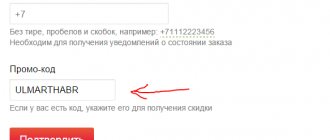Home / Complaints, courts, consumer rights / Consumer rights
Back
Published: 09.21.2018
Reading time: 7 min
0
820
A product purchased even from a trusted seller may turn out to be of poor quality. In this case, the party responsible for the sale is obliged to accept goods of inadequate quality from the buyer (clause 5 of Article 18 of the Law of the Russian Federation of 02/07/1992 No. 2300-1 “On the Protection of Consumer Rights”). In addition, in order to verify the validity of the client’s claim, the organization responsible for the sale has the right to conduct a quality check (clause 5 of Article 18 of the Law “On Protection of Consumer Rights”). The law allows the buyer to participate in this procedure.
- Checking the quality of goods and its difference from examination
- Check procedure
- Who is checking
- Timing of the procedure
- Checking a technically complex product
The seller’s right to conduct a product quality check, established at the legislative level, allows him to be protected from unfounded claims from the consumer. By checking the purchase for defects, you can draw a conclusion about the quality of the item sold and when exactly this or that defect appeared. The seller can carry out the procedure independently or involve third parties.
Checking the quality of goods and its difference from examination
The legislation separates the concepts of “quality control” and “examination”. The Law “On the Protection of Consumer Rights” states that an organization acting as a seller undertakes to accept a product from a consumer if its quality does not correspond to what was declared. If the client makes a complaint about the quality of the purchased product, the seller, to confirm this fact, has the right to check its characteristics in order to identify defects.
If the parties cannot come to a common decision regarding the quality of the purchase, then in this case the seller organizes an examination. The consumer himself, as in the case of verification, may be present during the procedure . If a citizen making a complaint about the quality of a purchase does not agree with the expert’s conclusion, then he has the right to appeal their decision in court.
The main difference between these two procedures is that the purchased product is checked first by the seller. For this, as a rule, there is no need to involve special experts. Most often, all actions are carried out by the seller himself. If a controversial situation arises during the inspection, an examination is appointed.
The examination is carried out after the completion of the procedure for checking the quality characteristics of the purchased item. For this purpose, special experts are already involved, who, after completing their actions, issue a conclusion. If they determine that the defects in the purchased item were not the fault of the seller, then the consumer will be obliged to reimburse all financial costs associated with the procedure.
Commentary on Article 18 of the PPA
1. The commented article establishes options for the consumer’s actions when defects are detected in the received product. The buyer has absolute freedom to choose a specific requirement from the list given in paragraph 1 of this article.
In addition, the consumer himself determines who to submit these requirements to: the seller, or an authorized organization (this could be, for example, a sales representative office of a manufacturer), or an authorized individual entrepreneur performing, for example, dealer functions. Requests for replacement, return of goods and free elimination of defects (warranty repair of goods) can also be addressed to the importer or manufacturer of the product.
When applying the provisions of the Law, one should proceed from the fact that the concept of “consumer” is somewhat broader than the concept of “buyer”. If the buyer is the person who paid for the goods, then consumers can be recognized as persons who did not buy, but acquired the goods on other legal grounds, for example, received as a gift, as compensation for costs or remuneration, or purchased the goods under a sales contract, but not from the manufacturer or seller of the product, but from the original buyer.
A consumer who is not the buyer of the goods cannot make a claim to reduce the purchase price or return the amount paid for the goods.
The authorized organization and authorized individual entrepreneur named in the Law are called upon to implement the individual obligations of the seller to fulfill consumer requirements. Acting on their own behalf, they carry out repairs and maintenance of products, deliver spare parts, accept goods for exchange, etc.
2. The concept of “defect of goods” is disclosed in the preamble of the commented Law as the non-compliance of goods with mandatory requirements, or the terms of the contract, or the purposes for which goods of this kind are usually used, or the purposes for which the goods were purchased and about which the seller was informed ( see commentary to the preamble).
In this case, you should pay attention to the fact that the buyer can present to the seller only one of the requirements given in the article. Subsequently, after the seller has fulfilled the initial requirement or has begun to fulfill it, it will be possible to change the essence of the requirements only with the consent of the seller.
As the court indicated in its decision, if defects in a technically complex product are discovered, the consumer has the right to choose one of the methods of protecting the violated rights provided for in Article 18 of the Law of the Russian Federation “On the Protection of Consumer Rights”, but not to apply them simultaneously (see: Definition of the St. Petersburg City court dated April 12, 2011 N 5163).
You can demand compensation for the costs of eliminating defects if the manufacturer or seller refused to carry out warranty repairs or did not make them within the appropriate period. In this case, it is necessary to document the costs incurred, as well as prove their necessity and reasonableness of size.
The requirement to reduce the price of a product is usually made when the product functions in accordance with its intended purpose, but not to its full extent. The price reduction occurs by agreement between the parties to the purchase and sale agreement or in accordance with a court decision; as a rule, the price is reduced to the market value of a similar product that does not have the characteristics missing in the purchased product.
Simultaneously with the exercise of one of the rights to make a claim established in paragraph 1 of the commented article, the buyer has the right to demand from the seller compensation for losses incurred in connection with identified deficiencies. In this case, we are talking about losses that cannot be compensated by reducing the purchase price, replacing the product, refunding the cost of the product, etc. These are losses incurred by the buyer, for example, due to the need to purchase additional equipment, lost income and other losses specified in Art. 15 Civil Code of the Russian Federation.
If, due to identified deficiencies, the buyer decides to refuse to fulfill the sales contract and demands a return of its value, the seller may demand that the defective product be returned to him. Returns are made at the seller's expense. The seller has no right to make any deductions related to loss of marketability or the fact that the goods have been in use, except in cases where the goods were improperly stored, intentionally damaged by the owner or third parties, etc.
However, if by the time the seller demands to return the defective product, the buyer has sold it to a third party, the seller can expect to receive all the proceeds from this transaction. In this case, the provisions of Art. 398 Civil Code of the Russian Federation.
3. With regard to the shortcomings of a technically complex product, the commented article provides only two options for the consumer: refuse the product and demand a refund, or replace the product with a recalculation of its cost. Moreover, these requirements can be presented only within 15 days from the date of receipt of the goods by the buyer.
The closed list of technically complex goods is established by Decree of the Government of the Russian Federation of November 10, 2011 N 924 “On approval of the list of technically complex goods.” Such goods include cars, computers, laptops, digital photo and video cameras, refrigerators, air conditioners, etc.
However, if the defect of a technically complex product is significant, or if the seller, authorized organization or individual entrepreneur did not eliminate the defects within the established time frame, or if the total repair period for the product takes more than 30 days during each year of the warranty period, the consumer may return such product or demand its replacement even after the expiration of the said fifteen-day period.
Check procedure
The Law “On the Protection of Consumer Rights” allows the seller to inspect a product about the quality of which the consumer has a complaint. This will make sure that the item really has defects that were not the fault of the buyer.
The procedure is most often carried out by representatives of a trade organization, and it consists of the following stages:
- Assessing the external qualities of an item , opening the case if necessary.
- Comparison of available external data and properties with the characteristics declared by the manufacturer.
- Function testing and performance assessment.
If the consumer wishes to personally attend the procedure, he must notify the seller about this in writing. The client is informed of the time and place of the inspection.
Upon receipt of the goods being assessed, the client receives a corresponding document. This may be an act or a note on the receipt of the purchased item by the seller to assess the quality characteristics.
Features of returning goods
Technically complex products
There are a number of features when returning a technically complex product of inadequate quality. The list of goods included in this category was approved by the Decree of the Government of the Russian Federation dated November 10, 2011, as amended on September 17, 2016. The list contains many devices, units and apparatus. For example:
- cars,
- motorcycles,
- snowmobiles,
- yachts,
- computers,
- TVs,
- photo and video cameras, etc.
Did you know
According to the List of Complex Technical Goods, a regular push-button cell phone is not classified as such. Comparing it with a smartphone, we can say that it does not have enough technical and functional capabilities to be considered complex. Read more about the List in the article here
Products of inadequate quality in this category can be returned to the seller within 15 days if any defect or malfunction is detected. After this period, technically complex goods can be returned for return only in the following cases:
- subject to the discovery of a significant defect that precludes further use of the product;
- if the total duration of repair of this product is more than 30 days per year;
- if the seller violates the period of 45 days allotted by law to eliminate the identified defect.
This right can be used by the consumer during the warranty period established by the seller or manufacturer of the product.
Guarantee period
The warranty period applies only to goods whose defects or defects did not arise as a result of improper use, installation or transportation. If there is any doubt, the seller has the right to send the goods for examination.
The warranty period for repair work can be legally established by agreement or immediately. In the first case, it can be less or more than 45 days (by agreement of the parties), while in the second case it is strictly 45 days. Read more about warranty periods in this article https://potrebexpert.online/5789-sroki-garantiinogo-remonta-tovara-prava-pokupatelya-pri-ih-narushenii
Dimensional goods
Products that are large in size or weigh more than 5 kg are delivered to the consumer for repair, examination, markdown or after repair at the expense of the seller.
Who is checking
Most often, when a client makes a complaint about the quality of a product, the inspection and identification of defects is carried out by a person representing the interests of the retail outlet where the purchase was made. If it is not possible to externally determine deficiencies, then in such cases the quality assessment is carried out in specialized service centers . Employees of such organizations have deeper knowledge and skills than employees of trade organizations.
In addition, public associations of consumers and Rospotrebnadzor can carry out quality control. Rospotrebnadzor can evaluate the goods sold by the seller during a scheduled inspection of the organization.
A citizen who has purchased a low-quality product can contact Rospotrebnadzor with a request to conduct an unscheduled inspection of a specific trade organization. But initially he needs to make a claim to the seller himself. If the purchase does not meet safety requirements, you can immediately contact Rospotrebnadzor.
How to properly draw up and submit a claim
To file a claim regarding the quality of complex equipment, the consumer has 15 days after purchase. To apply for elimination of defects after the above-mentioned time, the buyer must have a compelling reason:
- discovery of a significant deficiency;
- impossibility without further use.
If this problem exists, you should figure out how long it takes to draw up a report on hidden defects of the product. The document is drawn up within 5 days from the date of discovery.
It should be taken into account that the contract can stipulate otherwise. But no later than 4 months from the date of receipt of the goods.
A report on hidden defects with a warranty period is drawn up:
- Within five days of detection.
- within the warranty period.
If defects are detected in the purchased product, the buyer draws up a statement, which must contain information about:
- Applicant - full name, registration.
- Name of product.
- Date of purchase.
- About the grounds for return with a list of defects.
- Requirements.
At the end of the document there is a signature and date of preparation . It is advisable to insert references to legislative acts into the claim, which is proved by the buyer’s actions within the framework of domestic legislation.
Thus, the deadline for filing a claim for hidden product defects is two weeks. And also, it can be issued during the period when the factory warranty is valid.
Articles on the topic (click to view)
- The Supreme Court corrected the courts in the case of a “consumer” fine
- Bankruptcy procedure for an individual: steps, stages, step-by-step diagram
- Consequences and restrictions for the debtor and his relatives during bankruptcy proceedings under 127-FZ
- 159 Federal Law on additional guarantees for social support for orphans
- Phips open registers trademarks
- Federal Law on Insolvency (Bankruptcy) of Individuals 127-FZ and 154-FZ: what you need to know
- What is payment confirmation? Payment confirmation document
Timing of the procedure
The legislation does not establish one specific period during which the seller undertakes to check the quality characteristics of the product when a consumer makes a complaint. It all depends on what requirements the applicant puts forward. So, the period for conducting an inspection, depending on the situation, may be as follows:
- 45 days (Clause 1 of Article 20 of Law No. 2300-1) - if the claim puts forward a requirement to eliminate detected defects in the purchased item;
- 20 days (clause 1 of article 21 of Law No. 2300-1) - if the consumer who discovers defects demands a replacement of the purchase;
- 10 days (Article 22 of Law No. 2300-1) - if the client’s request is for a refund, a reduction in the price for a low-quality product, or compensation for losses associated with the purchase.
Judicial protection of consumer rights
As practice shows, most often the issue of returning or replacing goods can be resolved through negotiations with the seller and writing a corresponding statement.
However, if an agreement could not be reached, the consumer can go to court (at his place of residence, at the location of the organization, at the place of conclusion or execution of the sales contract).
In this case, the consumer is exempt from paying state duty:
3. Consumers and other plaintiffs in claims related to violation of consumer rights are exempt from paying state duties in accordance with the legislation of the Russian Federation on taxes and fees.
Time limit for acceptance of goods according to quality
- Claims under the supply agreement (part 2)
- When must a claim be made for quantity (in a closed container) and on the basis of what document?
- Law Club Conference
- Deadline for filing a claim for the quantity of goods
- QUESTION AND ANSWER The supply agreement states: The recipient may make claims to the Supplier regarding the quantity and quality of the goods within 30 days from the date of its receipt at the destination station
- Deadline for filing a claim for the quantity of goods
- We will call you back
The parties entered into a supply agreement. Expiration date, service life and other terms related to the quality of the goods: wording of the terms of the contract, possible risks for the supplier. Time limits for detecting defects, notifying them and filing claims with the supplier. The supplier must distinguish: the period for detecting defects in the transferred goods (Art.
What should I include in my application?
The wording depends on the nature of the requirements made by the buyer, for example:
- “During wear, shoes allow moisture to pass through due to poor sealing of the connecting seams. Based on the above, I demand compensation for expenses other than repairing shoes (brand, model, size).”
- Or “During the operation, it was determined that the assembly of the furniture was of poor quality. In connection with the above, I demand the return of the money paid for the purchase of the cabinet (brand, model, dimensions).”
The period for consideration of a claim is ten days from the date of its receipt.
Detection of hidden defects
In most cases, defects are visible to the naked eye, so they are not difficult for an attentive buyer to detect. Have you been planning to buy cosmetics or food products, but noticed that they are approaching their expiration date? In order not to risk your own health, you should refuse such a purchase.
The situation is much more complicated with hidden defects - defects that cannot be detected until the purchased item is used. In practice, such a defect does not appear immediately, but rather some time after the product has been used. This problem often affects technically complex devices.
Expert opinion
Musikhin Viktor Stanislavovich
Lawyer with 10 years of experience. Specialization: civil law. Member of the Bar Association.
The fact is that it is possible to return complex equipment or equipment (for example, a telephone, TV, computer, car) to the store within two weeks from the date of purchase.






